Change a Space with Seasonal Containers
Changing a container can change an entire space

Seasonal changes offer gardeners opportunities to transform their planters and spaces multiple times a year. The effect can be monumental. Great summer containers full of color and drama can be swapped out when autumn arrives for a cool-season mix of hardy plants that look good straight through to spring. An entire housefront can be altered just by changing out containers: charming and lush in one season, cool and elegant in another. A garden is never static, so why should containers be?
Cool and blue

A green New Zealand flax and a dark sweet potato vine keep the look subdued against the blue wall. Leatherleaf sedge and a swan river daisy give a subtle kick of deeper color to keep things lively. It’s a planting meant to peak with warm weather, exactly when this sort of refreshing scene makes a welcome sight.
- ‘Lineatum’ New Zealand flax (Phormium tenax ‘Lineatum’, USDA Hardiness Zones 8–11)
- Leatherleaf sedge (Carex buchananii, Zones 6–9)
- Nesia™ Dark Magenta nemesia (Nemesia caerulea ‘Nesia Dark Magenta’, Zones 9–10)
- ‘Sweet Caroline Purple’ sweet potato vine (Ipomoea batatas ‘Sweet Caroline Purple’, Zone 11)
- ‘Blue Zephyr’ swan river daisy (Brachyscome ‘Blue Zephyr’, Zones 9–11)
Contrast for cold days
These lively plants stand out in the blue space, unlike the previous pots that blended into it. ‘Goldcrest’ Monterey cypress, a fiery New Zealand sedge, and ‘Angelina’ sedum provide dynamic color that enlivens but doesn’t butt heads with the blue wall.
- ‘Goldcrest’ Monterey cypress (Cupressus macrocarpa ‘Goldcrest’, Zones 7–11)
- Orange New Zealand sedge (Carex testacea, Zones 7–9)
- ‘Frosted Violet’ heuchera (Heuchera ‘Frosted Violet’, Zones 3–8)
- ‘Angelina’ sedum (Sedum rupestre ‘Angelina’, Zones 6–9)
- ‘Penny Orange’ viola (Viola cornuta ‘Penny Orange’, Zones 6–8)
Demure designs work in winter too
‘Moonglow’ Rocky Mountain juniper, steely blue and slender, complements the blue wall. A vivid dash comes from the white pots and the tawny ‘Hansel’ rhododendrons.
- ‘Moonglow’ Rocky Mountain juniper (Juniperus scopulorum ‘Moonglow’, Zones 3–7)
- ‘Hansel’ rhododendron (Rhododendron ‘Hansel’, Zones 6–9)
- ‘Glacier’ English ivy (Hedera helix* ‘Glacier’, Zones 5–11)
- ‘Peach Flambe’ heuchera (Heuchera ‘Peach Flambe’, Zones 4–9)
- Leatherleaf sedge (Carex buchananii, Zones 6–9)
High contrast from a few plants
You could spot this arrangement from far away. The vibrant African daisy and New Zealand flax mean one can use fewer and smaller plants for a big effect.
- ‘Sundowner’ New Zealand flax (Phormium ‘Sundowner’, Zones 8–10)
- ‘Zwartkop’ aeonium (Aeonium arboreum ‘Zwartkop’, Zones 9–11)
- The Ravers® Pumpkin Pie™ African daisy (Arctotis Pumpkin Pie™, Zones 10–11)
- Firesticks (Euphorbia tirucalli ‘Rosea’, Zone 11)
- ‘Campfire’ crassula (Crassula coccinea ‘Campfire’, Zones 9–11)
Different yet traditional
Red bricks, white trim, and shutters: You’d have to live at Monticello to get more traditional. But containers don’t have to look old-fashioned to complement an older home. This blend includes a classic geranium that provides a dose of heritage, while a dracaena palm, a heuchera, and a Japanese forest grass breathe new life into the design. You haven’t tossed tradition out the door—you’ve just given it a makeover.
- Bauer’s dracaena palm (Cordyline ‘Baueri’, Zones 9–11)
- Calliope® Dark Red geranium (Pelargonium Calliope® Dark Red, Zone 11)
- ‘Aureola’ Japanese forest grass (Hakonechloa macra ‘Aureola’, Zones 5–9)
- ‘Plum Pudding’ heuchera (Heuchera ‘Plum Pudding’, Zones 3–8)
Novel in a livelier way
‘Goldcrest’ Monterey cypress and a chrysanthemum offer shapes similar to the arrangement on the facing page but in more vibrant colors. The plants are a great source of interest that wake up an otherwise simple house facade.
- ‘Goldcrest’ Monterey cypress (Cupressus macrocarpa ‘Goldcrest’, Zones 7–11)
- ‘Frosted Violet’ heuchera (Heuchera ‘Frosted Violet’, Zones 3–8)
- Chrysanthemum (Chrysanthemum cv., annual)
- ‘Angelina’ sedum (Sedum rupestre ‘Angelina’, Zones 6–9)
Bright for the heart of the season
Summer is warm and robust—and so are these entryway containers. The tropical canna reaching up out of a bounty of sweet potato vines and other leafy plants is a sign of the growing season.
- Tropicanna® canna (Canna indica ‘Phasion’, Zones 8–11)
- ‘Sweet Caroline Purple’ sweet potato vine (Ipomoea batatas ‘Sweet Caroline Purple’, Zone 11)
- ‘Lemon Twist’ plectranthus (Plectranthus ‘Lemon Twist’, Zones 12–13)
- ‘Sky Fire’ coleus (Solenostemon scutellarioides ‘Sky Fire’, Zones 12–13)
- ‘Sweet Caroline Sweetheart Red’ sweet potato vine (Ipomoea batatas ‘Sweet Caroline Sweetheart Red’, Zone 11)
- ‘Xenox’ sedum (Sedum ‘Xenox’, Zones 3–9)
Tranquil for a cooler time of year
Call it the “curse of the conifers,” but those plants go hand in hand with cool weather. This pair of pots will look good despite the cold, thanks to the evergreen juniper and the rhododendron. A rosemary or lavender wreath, like the one on the door, ties these silvery-needled plants together.
- ‘Moonglow’ Rocky Mountain juniper (Juniperus scopulorum ‘Moonglow’, Zones 3–7)
- ‘Hansel’ rhododendron (Rhododendron ‘Hansel’, Zones 6–9)
- ‘Evergold’ sedge (Carex oshimensis ‘Evergold’, Zones 6–9)
- ‘Peach Flambe’ heuchera (Heuchera ‘Peach Flambe’, Zones 4–9)
- Leatherleaf sedge (Carex buchananii, Zones 6–9)
Overflowing for summer
This overfilled urn and window box are as pleasant in summer as oscillating fans. The spilling sweet potato vine, arching elephant’s ear, and mounding fuchsia all contribute to the over-the-top feeling of this ensemble.
- Black stem elephant’s ear (Colocasia esculenta* ‘Fontanesii’, Zones 8–11)
- ‘Sky Fire’ coleus (Solenostemon scutellarioides ‘Sky Fire’, Zones 12–13)
- Sweet potato vine (Ipomoea batatas cv., Zone 11)
- ‘Lemon Twist’ plectranthus (Plectranthus ‘Lemon Twist’, Zones 12–13)
- Fuchsia (Fuchsia cv., Zones 9–10)
- Umbrella plant (Cyperus alternifolius, Zones 9–11)
Tidy for winter
Here’s the same window outfitted for cool weather. The rhododendron and ‘Evergold’ sedge sit lower than the plants in the window box in the previous photo, and ‘Moonglow’ Rocky Mountain juniper forms a tighter column than that of the sprawling black stem elephant’s ear.
- ‘Hansel’ rhododendron (Rhododendron ‘Hansel’, Zones 6–9)
- ‘Evergold’ sedge (Carex oshimensis ‘Evergold’, Zones 6–9)
- ‘Peach Flambe’ heuchera (Heuchera ‘Peach Flambe’, Zones 4–9)
- ‘Moonglow’ Rocky Mountain juniper (Juniperus scopulorum ‘Moonglow’, Zones 3–7)
A ringleader pot
The center container, filled with pearly succulents and smooth stones, sets the tone for this potted trio: It’s cool, collected, and minimal.
- ‘Zwartkop’ aeonium (Aeonium arboreum ‘Zwartkop’, Zones 9–11)
- ‘Maestro’ sedum (Sedum ‘Maestro’, Zones 3–9)
- ‘Nova’ agave (Agave attenuata ‘Nova’, Zones 10–11)
- Pachyphytum (Pachyphytum cv., Zones 12–13)
- Echeveria (Echeveria pallida, Zones 10–11)
- Aloe vera (Aloe vera, Zones 10–11)
- Hens and chicks (Sempervivum spp. and cvs., Zones 4–11)
- ‘Oregon Green’ Austrian pine (Pinus nigra ‘Oregon Green’, Zones 5–8)
Change the centerpiece, change the space
With the ‘Zwartkop’ aeonium replaced by a more flexible and fanlike weeping yucca, the flanking pots were altered to frame the effect. A rhododendron, a euphorbia, and dwarf blue fescue fill the yucca’s bowl to extend the grassy leitmotif.
- Weeping yucca (Yucca recurvifolia, Zones 7–9)
- ‘Hansel’ rhododendron (Rhododendron ‘Hansel’, Zones 6–9)
- ‘Ascot Rainbow’ euphorbia (Euphorbia × martinii ‘Ascot Rainbow’, Zones 5–9)
- Dwarf blue fescue (Festuca glauca cv., Zones 4–8)
A simple entryway
Using matching small-flowered red annuals on both floors of the home is a charming way to make it more intimate. These reds are so bright that they need splashes of green sweet potato vine to provide a complementary contrast.
- Dragon Wing™ Red begonia (Begonia Dragon Wing™ Red, Zone 11)
- Snowstorm® White bacopa (Sutera cordata Snowstorm® White, Zones 9–11)
- ‘Margarita’ sweet potato vine (Ipomoea batatas ‘Margarita’, Zone 11)
- ‘Accent Red’ impatiens (Impatiens walleriana ‘Accent Red’, annual)
- ‘Red Star’ cordyline (Cordyline ‘Red Star’, Zones 9–11)
- Purple heart (Tradescantia pallida ‘Purpurea’, Zones 8–11)
- ‘Silver Falls’ dichondra (Dichondra argentea ‘Silver Falls’, Zones 10–11)
A lusher, more elegant take
The many yellows, greens, and whites of these plants form a classy color selection that plays nicely off the home’s exterior. This shows how spectacular a supergroup of containers can be when designed with color, form, and texture in mind.
- ‘Aureola’ Japanese forest grass (Hakonechloa macra ‘Aureola’, Zones 5–9)
- ‘Clara’ begonia (Begonia ‘Clara’, Zones 12–13)
- Variegated ground ivy (Glechoma hederacea* ‘Variegata’, Zones 4–9)
- Snowstorm® White bacopa (Sutera cordata Snowstorm® White, Zones 9–11)
- King Tut® papyrus (Cyperus papyrus ‘King Tut’, Zone 11)
- Wizard™ Jade coleus (Solenostemon scutellarioides ‘Wizard Jade’, Zones 12–13)
- ‘Sweet Caroline Light Green’ sweet potato vine (Ipomoea batatas ‘Sweet Caroline Light Green’, Zone 11)
*These plants are considered invasive in some areas. Please check invasiveplantatlas.org or your state’s list of invasive plants for more information.
—Todd Holloway is the owner of Pot Inc., a plant design firm, and creates premium landscape and garden planters in Vancouver, British Columbia.
Photos, except where noted: Todd Holloway
















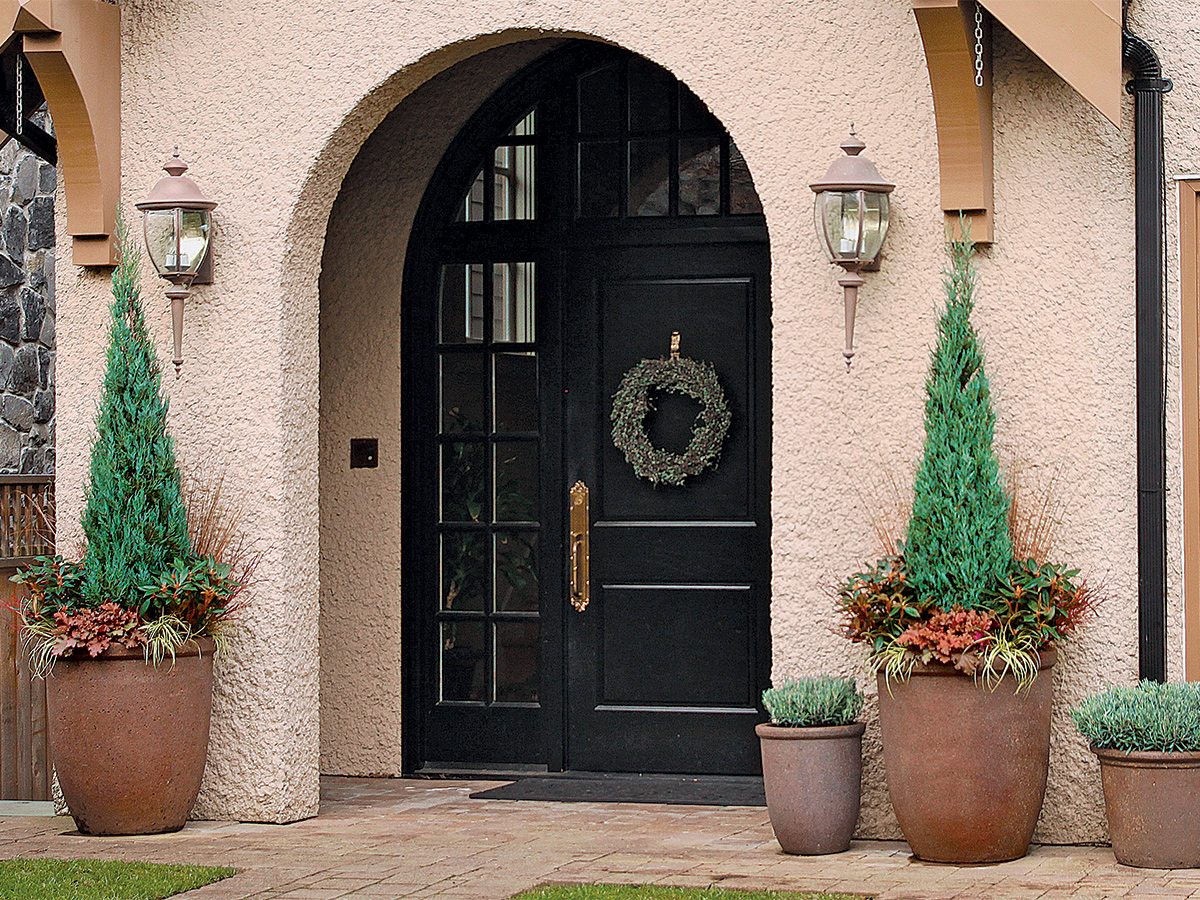








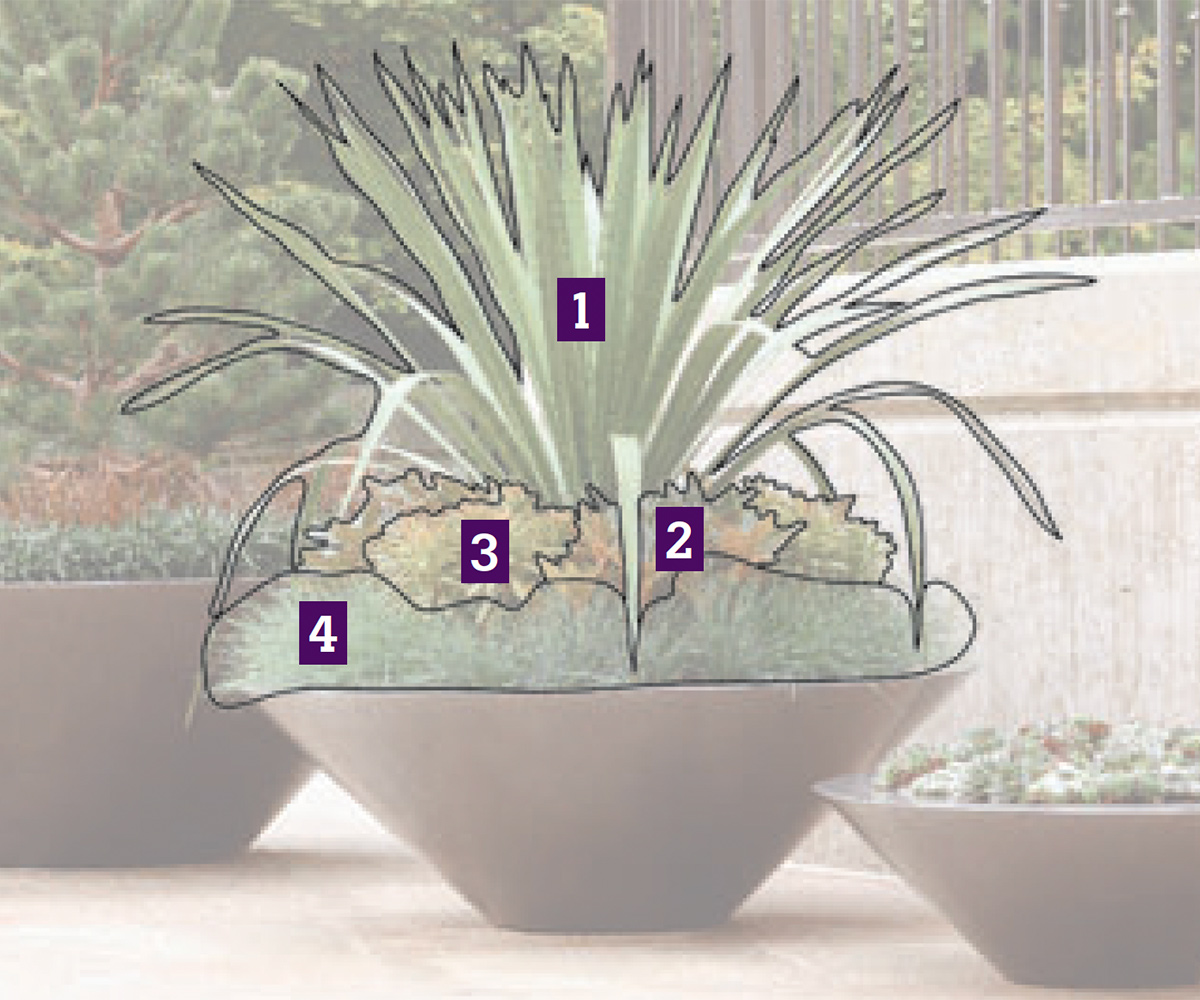
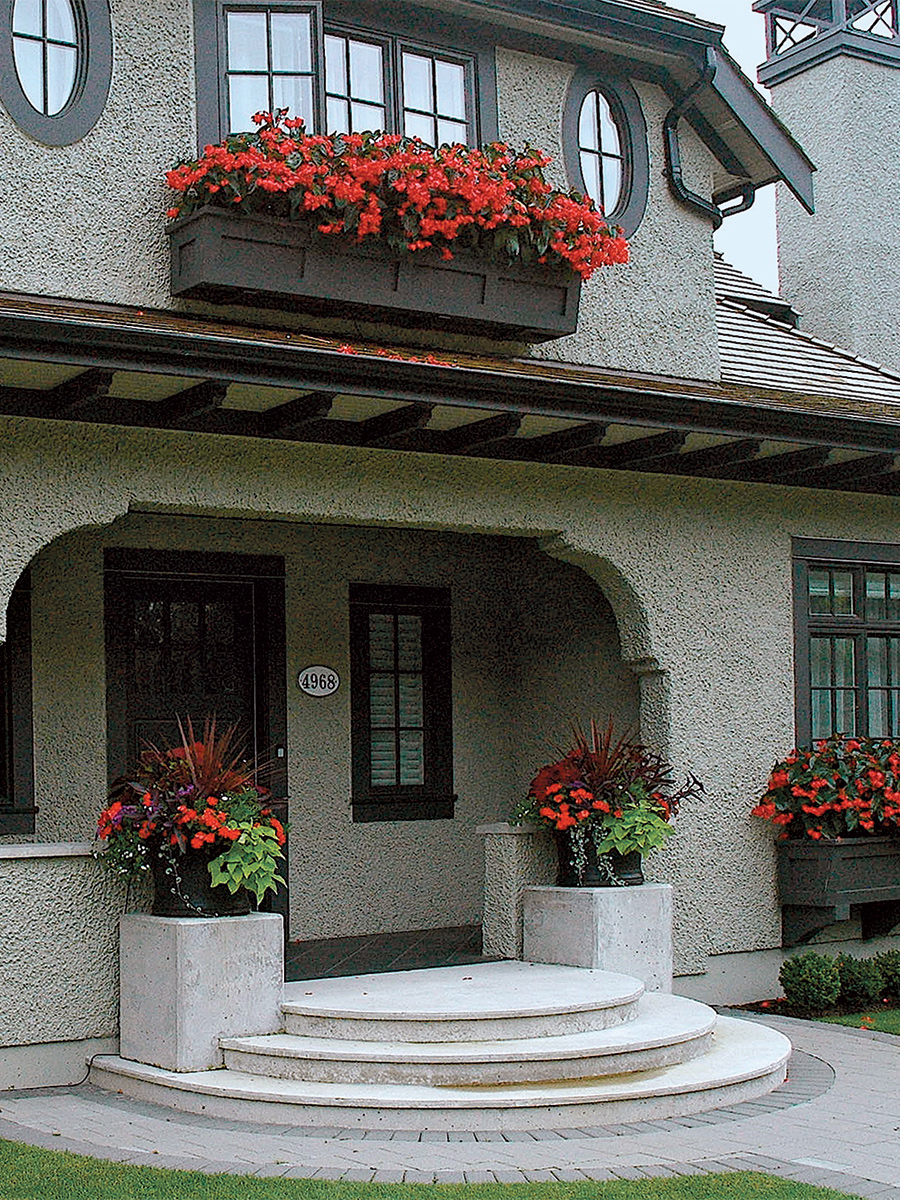
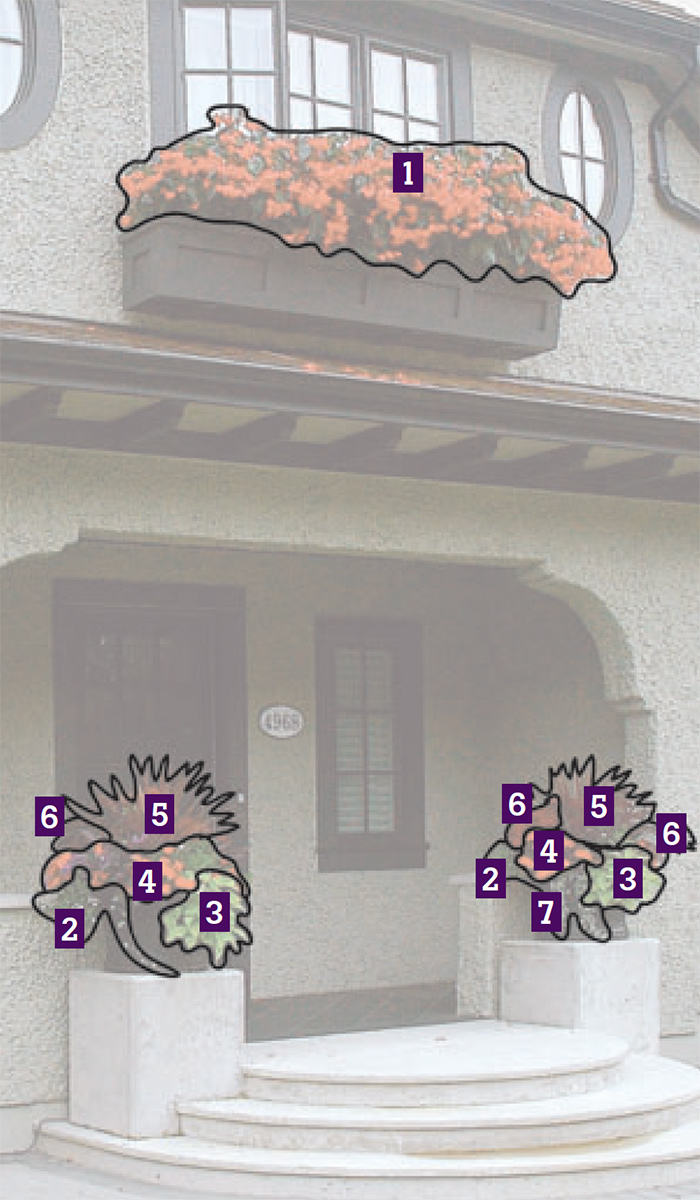

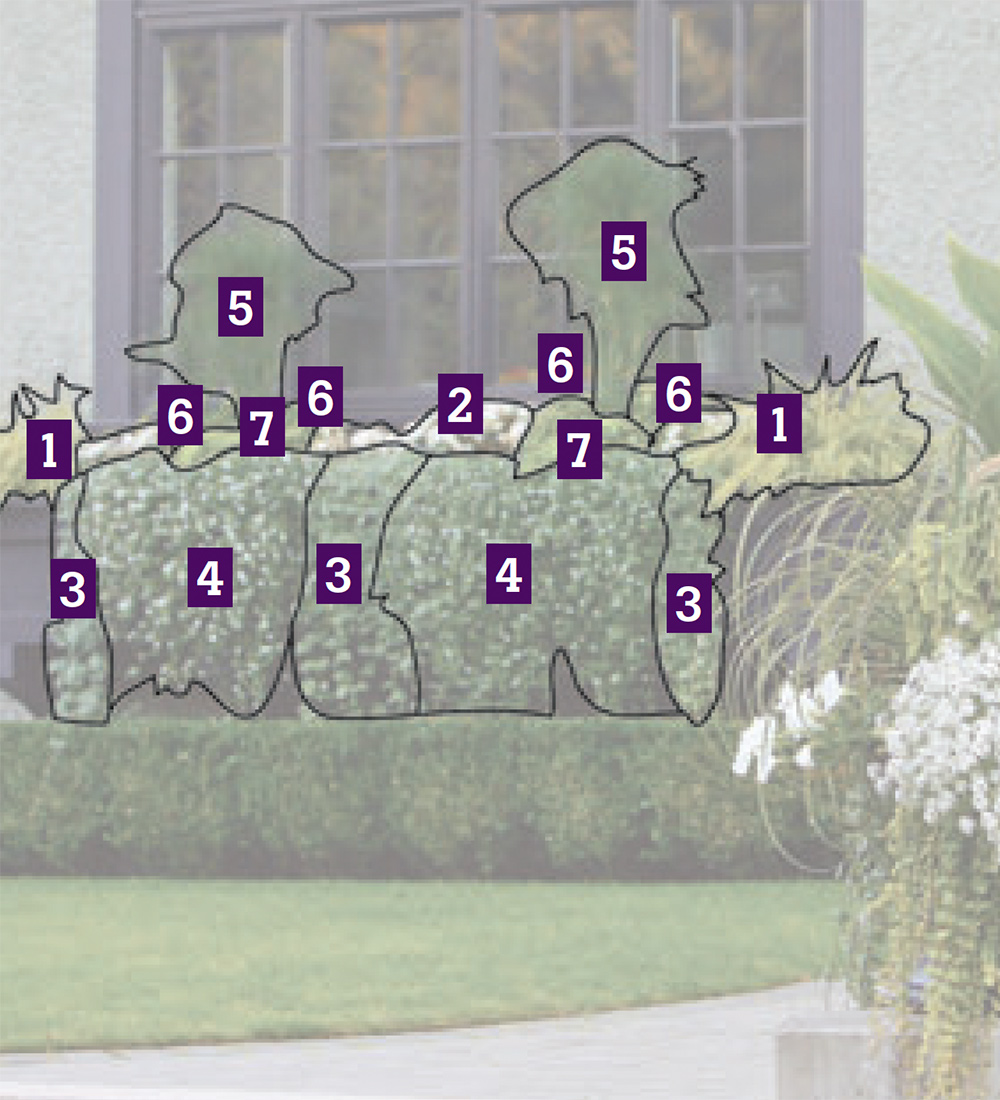



Comments
Log in or create an account to post a comment.
Sign up Log in